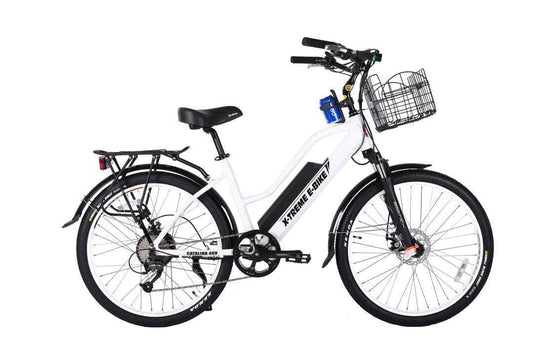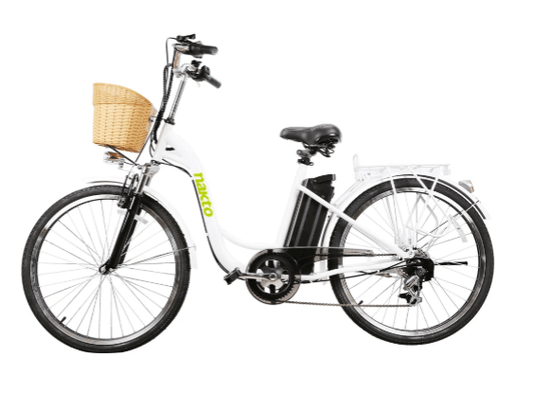Bike Size Chart by Height

Choosing the right bike size is crucial for comfort, performance, and safety. When you're out on a ride, the last thing you want is discomfort or strain caused by a poorly sized bike. One of the best ways to find your ideal fit is by using a bike size chart that correlates with your height. Here’s everything you need to know about selecting the right bike size by height and why it matters.
Why Bike Size Matters
Riding a bike that fits well is essential for maintaining proper posture and avoiding fatigue or injury. A bike that’s too small may cause cramped movements, while a bike that's too large can make it difficult to reach the pedals and handlebars comfortably. A well-sized bike enables better control, helps you maintain a proper riding stance, and ensures you can enjoy longer rides without pain.
Using a Bike Size Chart by Height
Bike sizes are typically based on the height of the rider, making it simple to match yourself to a bike frame that will suit you. Here’s a standard bike size chart by height to help you make the right choice:
| Rider Height | Road Bike Size (cm) | Mountain Bike Size (inches) | Hybrid Bike Size (inches) |
|---|---|---|---|
| 4’10” - 5’1” (147-155 cm) | 44 - 47 cm | 13” - 14” | 13” - 15” |
| 5’1” - 5’5” (155-165 cm) | 47 - 50 cm | 15” - 16” | 15” - 17” |
| 5’5” - 5’9” (165-175 cm) | 50 - 54 cm | 17” - 18” | 17” - 19” |
| 5’9” - 6’0” (175-183 cm) | 54 - 58 cm | 19” - 20” | 19” - 21” |
| 6’0” - 6’3” (183-191 cm) | 58 - 61 cm | 21” - 22” | 21” - 23” |
| 6’3” and above (191+ cm) | 61+ cm | 23”+ | 23”+ |
How to Use the Chart
- Measure Your Height: Stand upright without shoes and measure from the floor to the top of your head. This is your accurate height for selecting the right bike size.
- Identify Your Bike Type: Different types of bikes, such as road bikes, mountain bikes, and hybrids, have slightly different sizing requirements due to their distinct geometries and riding styles. For example, road bikes have a more aggressive, aerodynamic fit, while mountain bikes are designed for stability and control over rough terrain.
- Select Your Frame Size: Use the chart to find your recommended frame size based on the type of bike you want. Most brands will provide similar sizing, but it’s a good idea to double-check with the specific brand if possible.
Additional Tips for a Perfect Fit
- Check the Standover Height: When standing over the bike’s top tube, you should have at least 1-2 inches of clearance for road bikes and 2-3 inches for mountain bikes.
- Adjust Saddle Height: Once you’ve selected your frame, set the saddle height so that your leg is nearly straight (with a slight bend) when the pedal is at its lowest point.
- Fine-Tune Handlebar Reach: Your reach to the handlebars should feel comfortable, allowing you to maintain a relaxed grip with slightly bent elbows.
What If You're Between Sizes?
If your height falls between sizes, consider the following:
- Riding Style: For a more aggressive riding style, go for the smaller size for better handling. If you prefer a more relaxed posture, go for the larger size.
- Personal Comfort: Some riders simply feel better on a slightly larger or smaller frame, so it’s worth testing both if possible.
In Summary
A well-fitted bike makes a huge difference in your riding experience, so take the time to select a frame size based on your height and bike type. By following a bike size chart and adjusting your bike setup, you’ll enjoy a more comfortable, controlled, and enjoyable ride. Now that you’re equipped with the knowledge to find your perfect fit, happy riding!
Contact form
Check Out Our Favorite E-Bikes Under $1,000
Enjoy a price match guarantee, plus free and fast shipping!
-
X-Treme Catalina Beach Cruiser Electric Bike [48V 500W]
Regular price $999.00 USDRegular priceUnit price per$1,499.00 USDSale price $999.00 USDSale -
X-Treme Malibu Elite Max Beach Cruiser Electric Bike [36V 350W]
Regular price $999.00 USDRegular priceUnit price per$1,229.00 USDSale price $999.00 USDSale -
Nakto Camel Step Through Women's Electric Bike
Regular price $749.00 USDRegular priceUnit price per$849.00 USDSale price $749.00 USDSale -
Ecotric Vortex 36V 350W Electric Bike
Regular price $739.99 USDRegular priceUnit price per


![X-Treme Malibu Elite Max Beach Cruiser Electric Bike [36V 350W]](http://journeybikes.com/cdn/shop/products/x-treme-electric-bikes-one-size-baby-blue-x-treme-malibu-elite-max-36v-step-through-beach-cruiser-ebike-5065687892057.jpg?v=1572878639&width=533)

